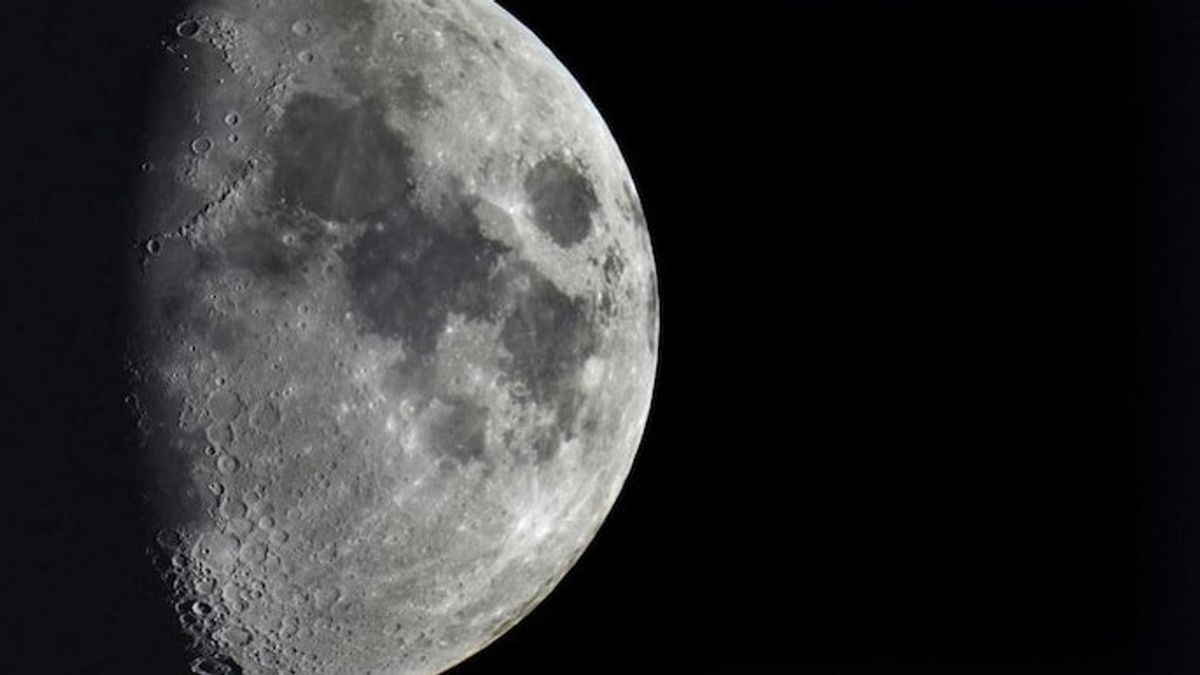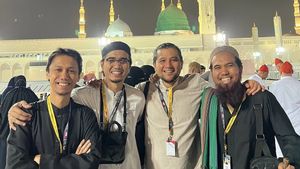JAKARTA - NASA and scientists at the US Department of Energy (DoE) plan to build a telescope on the Moon that will hunt for ancient radio waves, emitted just 380,000 years after the Big Bang.
Dubbed the Lunar Surface Electromagnetics Experiment-Night (LuSEE-Night), this is a radio telescope concept that will be sent to the far side of the Moon.
Before the first stars formed, the universe was in what's called the Dark Ages starting about 380,000 years after the Big Bang.
New atoms begin to form and emit photons. The energy of these photons has been stretched as the universe expands over time to become a hypothetical source of radio energy known as Dark Age Signals, making it impossible for scientists to observe them.
Picking up these waves on Earth is difficult because of the huge interference that blocks the signals. The moon itself has no atmosphere, making it the perfect location for radio telescopes to pick up signals.
Scientists at DoE say studying these signals can help uncover answers to some of the universe's greatest mysteries, such as the nature of dark energy or the formation of the universe itself.
“Modeling the universe was easier before stars were formed. We can calculate almost anything exactly. So far, we can only make predictions about the early stages of the universe using a benchmark called the cosmic microwave background," said Brookhaven physicist Anže Slosar in a statement.
"The Dark Ages signal will provide a new benchmark. And if the predictions based on each benchmark don't match, it means we've discovered new physics."
Finding a signal among the noise and interference from other radio sources, however, requires placing the probe somewhere very isolated, such as the far side of the Moon.
"The Moon and Earth are tidally locked, which means the Moon rotates around its own axis at the same speed as it circles the Earth. This is why we always see the same side of the Moon. But the side we can't see, the far side of the moon, is shielded from many sources of radio interference at night by the Moon's own mass," Slosar explained.
The far side of the Moon is a much more difficult environment to operate in. However, the LuSEE-Night telescope must be able to generate enough power to keep working in widely varying temperatures.
Communication between Earth and the far side of the Moon is also slower, and astronomers on Earth have to wait 40 days to receive the first signal back from the probe.
SEE ALSO:
"The moon is easier to reach than Mars, but the others are more challenging," said Paul O'Connor, a senior scientist in Brookhaven's Instrumentation Division and Project LuSEE-Night Instrumentation Scientist.
“There is a reason why only one rover has landed on the Moon in the last 50 years, while six others have gone to Mars, which is 100 times farther away. It's a vacuum environment, which makes heat dissipation difficult, and there's a lot of radiation," he added.
The goal is to send a lander robot to land on the lunar surface and use a telescope. Four antennas, measuring three meters long, developed by researchers at the Lawrence Berkeley National Laboratory, will be opened to find radio waves from Dark Age Signals.
The mission is expected to launch in 2025 as part of NASA's Commercial Lunar Payload Service, an initiative to extend spaceflight contracts to private companies.
"The LuSEE-Night is not a standard radio telescope. It is more of a radio receiver. It will work like an FM radio, picking up radio signals in the same frequency band. The spectrometer is the heart of it. Like a radio tuner, it can separate radio frequencies, and it turns the signal into a spectrum ," said Slosar, quoted from The Register, Friday, January 17.
The English, Chinese, Japanese, Arabic, and French versions are automatically generated by the AI. So there may still be inaccuracies in translating, please always see Indonesian as our main language. (system supported by DigitalSiber.id)


















